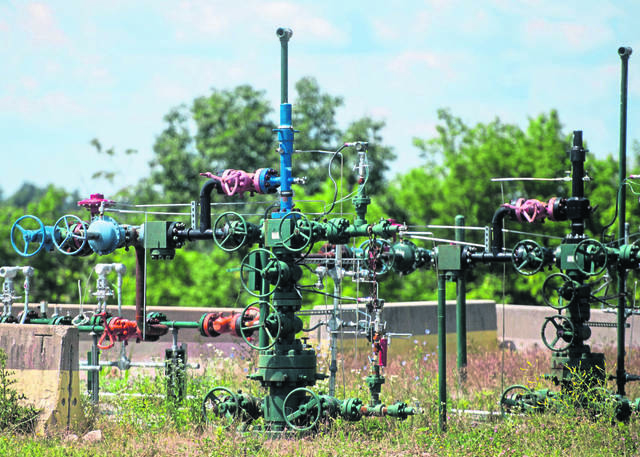https://triblive.com/opinion/joseph-otis-minott-biden-must-prioritize-health-of-pa-citizens/
Joseph Otis Minott: Biden must prioritize health of Pa. citizens

The U.S. Environmental Protection Agency (EPA) is on pace to propose new standards for methane and other volatile organic compound (VOC) pollution from oil and gas facilities by September 2021. Next month, Sen. Martin Heinrich, D-N.M., will attempt to use the 1996 Congressional Review Act to undo the Trump administration’s reckless dismantling of the 2016 New Source Performance Standards for oil and gas facilities. This was the first ever federal standard for methane and volatile organic compound leakage from new oil and gas facilities.
We need President Biden and EPA Administrator Michael Regan to prioritize the health of Pennsylvanians when establishing these much needed public health and air pollution standards. The Pennsylvania Department of Public Health recently concluded that, “Air pollution is one of the greatest health challenges in Pennsylvania.”
The United Health Foundation ranks Pennsylvania 47th in national air quality, and 8.8% of minors in Pennsylvania suffer from asthma compared to the national average of 7.7%. Pennsylvania ranks 33rd in asthma prevalence in the country. Seventeen Pennsylvania counties containing 63.5% of the state’s population live in counties that do not attain the 2008 National Ambient Air Quality Standards (NAAQS) for ground-level-ozone.
In what will hopefully be a sign of things to come, the EPA recently finalized proposed changes to the Cross State Air Pollution Rule targeting migrating smog pollution that will go into effect this summer in 12 states, including Pennsylvania. EPA said this change will create, “public health and climate benefits valued annually, on average, at up to $2.8 billion each year over the period 2021 to 2040.”
Air pollution from the oil and gas industry presents a complex problem. When methane is emitted from the oil and gas industry, it is often accompanied by dangerous VOCs. These VOC emissions include air toxics like benzene, a known carcinogen, and n-hexane, which affects an individual’s central nervous system. VOCs also form ground-level ozone (smog) in heat and threaten public health. Hotter temperatures from climate change, caused by greenhouse gases like methane, result in increased smog levels. Methane is 87 times more potent as a greenhouse gas than carbon dioxide over a 20-year time period.
Air pollution from the oil and gas industry exacerbates climate change and worsens air quality, but there are simple, cost-effective, job-creating solutions that can slash a significant amount of pollution from the industry. Since every step in the oil and gas production, from extraction to processing to transportation, emits methane and VOCs, the solution is hiring more workers to look for leaks at drilling sites and compressor stations using a special infrared camera, and then seal and tighten any leaks they find. In addition to numerous active wells and compressor stations, Pennsylvania also has an immense problem of abandoned gas wells that also leak methane and VOCs that must be addressed.
If we are to meet Biden’s goal of a “100% clean energy economy and net-zero emissions” by 2050, we cannot merely reduce greenhouse gases from the oil and gas industry — we must quickly transition away from fossil fuels, including natural gas, as quickly as possible. This includes aggressively expanding renewable energy. It is an irrefutable fact that the recent widespread and tragic blackouts in Texas were caused by gas freezing in pipelines and at drilling sites.
It is true that wind and solar generation was also disrupted by winter storm Uri, but winterizing above-ground wind turbines and solar panels is far more cost-effective than doing the same for gas infrastructure. Wind and solar also has the benefit of onsite battery storage.
Our increasing reliance on natural gas for electricity is disturbing. Pennsylvania is only behind Texas in gas production. While gas production in Texas declined slightly in 2020, Pennsylvania increased its gas production by 1 billion cubic feet per day from 2019 to 2020, second only to West Virginia in that time period. Methane emissions from natural gas systems went up nationally in 2018 and 2019, according to the EPA’s most recent greenhouse gas inventory.
Methane and VOC emissions from the oil and gas industry will continue to harm public health in Pennsylvania unless immediate action is taken with strong regulation of existing natural gas infrastructure and new plans for future electricity generation that aren’t reliant on fossil fuels.
Wind and solar must be the centerpieces of Biden’s Build Back Better platform. Expanded wind and solar power coupled with energy efficiency in buildings and innovative battery storage will help curb the worst effects of climate change and reduce smog pollution fueled by increased gas production in Pennsylvania. Wind and solar are more resilient to the effects of climate change and will reduce the air pollution that causes climate change.
New Energy Secretary Jennifer Granholm has already pledged $40 billion in loan guarantees for clean energy projects with 40% going to disadvantaged communities, many of which are in Pennsylvania. The Biden administration must not only address the urgent issue of methane right now, but also support new clean energy businesses so they can thrive as we transition to non-polluting sources of energy.
Joseph Otis Minott is executive director and chief counsel at the Clean Air Council.
Copyright ©2025— Trib Total Media, LLC (TribLIVE.com)
